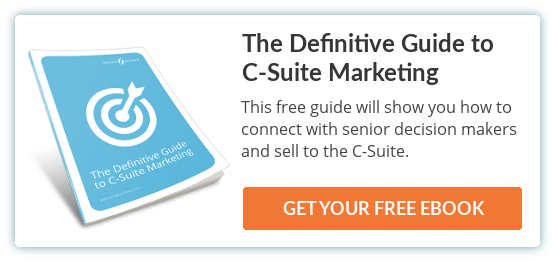
15 Aug 4 Conversion Optimisation Tips to Boost Response
We all want to boost the performance of our website. Whether it be to drive more sales, generate more leads or boost some other conversion goal, we’re always looking for ways to increase response.
Sure, you could throw more money at your marketing to generate more traffic. Is that such an effective way of doing things, though? Couldn’t it be better?
Conversion rate optimisation, or CRO for short, is where we make certain tweaks to our digital marketing efforts in order to boost performance. They’re usually done in the form of A/B tests, or split tests, so the new variation can be compared to what you’re currently doing.
There are several ways CRO can be applied to your marketing funnel, and we’ve got 5 great conversion optimisation tips that you can try out today. Take a look:
1. Call-To-Action Button & Text
You likely have various calls-to-action on your website designed to get your visitors to take some form of action. Whether that be to visit an important page in the sales funnel or submit their details, we all have them.
What many marketers don’t know, however, is that the wording, size and colour of the call-to-action matters just as much as what you’re trying to get your visitors to do.
Copy of the call-to-action, for example, is incredibly important to get right. Let’s say you have a lead capture form with a submit button. Using the word “Submit” on that button is hardly going to compel people to click. You need something compelling, for example:
“Request Your Consultation”
“Download Your Report”
“Let Me In!”
A good rule of thumb is to have the call-to-action relate to what the visitor is getting in return for taking the action you’re asking them to do. If they’re filling in a form to download a free eBook, use the words “Download Your Free eBook”. This sort of improvement can make noticeably fast improvements to your conversions.
Size and colour of your call-to-action can make a world of difference, too. If you have a thin, red call-to-action, see what happens when you make the button bigger or change the colour to green. This may increase your conversions (or it might not, as is the way of testing).
2. Headline
Your headline is the first thing that will get a visitors’ attention when they land on your website, so it’s important you get it right. Does it effectively communicate your value proposition? Could it be shorter or longer in order to get the point across?
Oftentimes, tweaking the headline can be a catalyst for more engagement on your website and landing pages. You have, on average, just 4 seconds to grab a prospects attention and your headline is the only way to do this. Do a better job of getting their attention and you could expect more on-page engagement and, as a result, conversions.
Unbounce released a great blog post on some headline formulas they tested, sharing the results they gained for their customers. My favourite from this list is for an SEO tool called DCFinder.
The original headline used was “Pinpoint and Eliminate Duplicate Content”, and was tested against the treatment headline “Avoid Losing Rankings, Traffic and Money!”
The treatment headline generate a 68% increase in CTR (click-through rate) than the original. By simply changing the headline they increased their engagement and response.
See how you can tweak your headlines in order to enforce your benefits and value proposition and increase your conversions.
3. Website layout
The placement of your website’s elements is just as important as the content of those elements themselves. Experimenting with the user experience can improve how far along your marketing funnel a visitor travels.
Sometimes marketers put important content below the fold. For example, you might have a headline and lots of other information on the features and benefits of your product in plain view, but an important call-to-action might be hidden below all this.
Making sure you have the most important elements above this fold – headline, bullets, imagery and call-to-action – can make a huge difference in conversions.
Most people only scroll because they’ve been hooked and want more information. Most of the time, however, if they’re forced to put more energy and work into finding what they need then they’ll likely bounce away from your website. Ensure the visitor has everything they need to take the next step in your funnel.
4. Email length
Emails are key to any marketers nurturing efforts, and these should be subject to testing and optimisation as well. Oftentimes we make the length of our emails too long or too “image heavy”. If we were to really get down to it, we could easily cut out a lot of the fat that we send to our leads.
As Morgan Brown, author of Unlocking Growth says; “Cut the length of your email copy in half. Now cut it in half again.”
Sometimes we get so caught up with everything we want to say in an email it turns into a very lengthy piece that says far too much. On top of this, many marketers try and put more than one message into their emails, making it confusing. The recipient is likely to take no other action than click the “delete” button.
Another way you might optimise is by testing html vs. plain text emails. Those image-heavy messages can sometimes weigh the performance of your messages down, so if you’re using an email template with a header, borders and lots of imagery try split testing it against an email that simply contains text.
You should also try testing the subject line, body copy as well as any personalisation and calls-to-action within the email.
Conclusion
I’ve given you some easy and actionable ideas here, but there are a few principles you should keep by. First of all, always test with a goal in mind. For example; if you’re optimising a headline is it for higher engagement or more sign ups?
You should also only ever test one element of a webpage or piece of marketing at a time. If you change too many elements at the same time then it will be much harder to tell what made any change in response.
Test frequently and test often. Good CRO can boost profits without the need for spending more money on advertising or acquisition at the top of the funnel, so make sure you experiment early and often.




No Comments